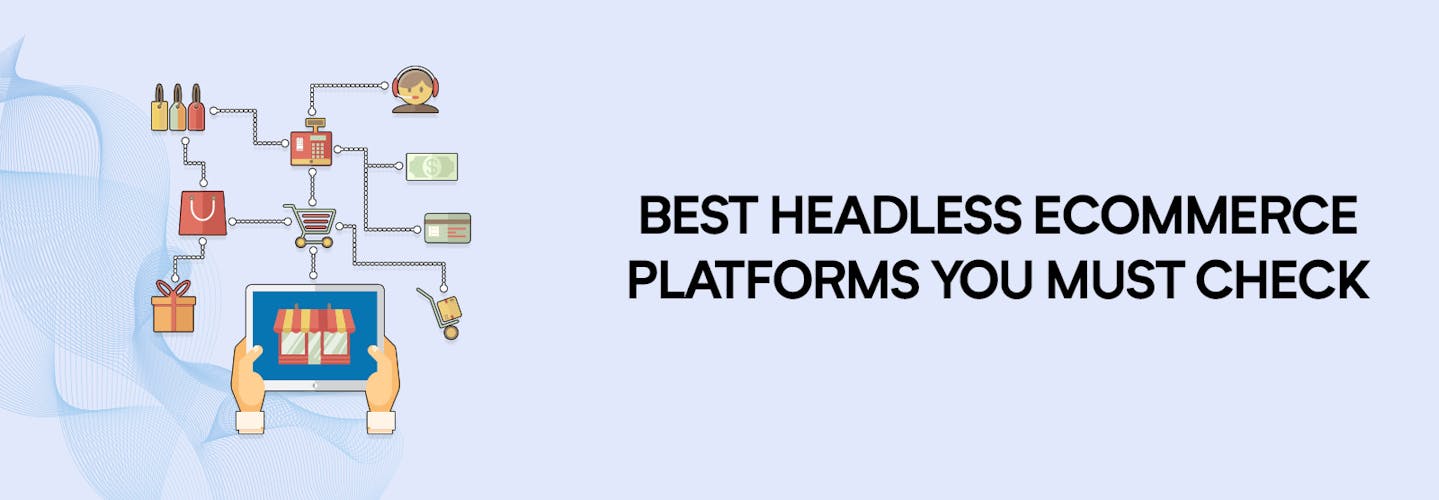
10 Best Headless Commerce Platforms for Superior Ecommerce
Looking to take your e-commerce business to the next level? Consider using a headless commerce platform!
With a headless commerce platform, you can separate your backend from your frontend, giving you greater flexibility and control over your e-commerce operations. But with so many options on the market, which one should you choose?
That’s where our list of the 10 best headless commerce platforms comes in. We’ve done the research for you and narrowed down the field to the top 10 platforms that offer superior e-commerce capabilities.
From flexible API integrations to customizable frontends, these platforms offer the tools and features you need to succeed in today’s competitive e-commerce landscape.
Don’t settle for a one-size-fits-all solution. Choose one of the best headless commerce platforms for your business and start taking your e-commerce operations to the next level today!
But before we get into the top headless eCommerce platforms, let’s dive into the basics.
What Exactly is Headless Commerce ?
The term “headless” comes from the decoupling of the frontend “head” from the backend “body.” This separation allows developers and designers to work independently on different parts of an e-commerce website without having to worry about how changes will affect other parts.
Headless commerce refers to separating the front-end design from the back-end management of an e-commerce platform. This means that businesses can have greater flexibility and control over their online stores, allowing for faster and more scalable growth.
In traditional e-commerce platforms, the front-end design is tightly integrated with the back-end management system. Changes to one often require changes to the other, which can be time-consuming and costly.
With headless commerce platforms, businesses can choose to use any front-end technology they want without affecting their backend processes.
This allows them to create bespoke storefronts that offer unique experiences for customers. and 62% of companies agree that headless eCommerce can significantly increase engagement and conversions.
One key benefit of this approach is that it enables businesses to create bespoke customer experiences across multiple channels, such as mobile apps or IoT devices.
For example, if a business wants to create an AR-powered shopping experience for customers in-store, they could use a headless commerce platform with an AR API integration. Another advantage of headless commerce is its scalability.
The modular architecture allows businesses to add or remove features as needed without affecting other parts of their website.
This makes it easier for companies that experience fast growth or seasonal spikes in demand, allowing them to scale their platform without having to rebuild from scratch.
Why Headless Commerce is the Future of E-commerce ?
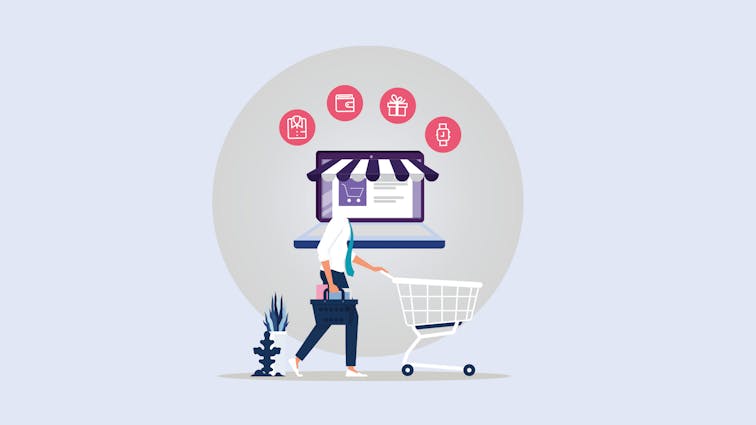
1. Increased Flexibility and Customization
The decoupled architecture of Headless storefront builder allows businesses to have complete control over their frontend design and user experience. This enables brands to create unique, tailor-made digital experiences that leave a lasting impression on their customers.
2. Faster Time to Market
With headless commerce platforms, developers can implement new features and updates more quickly. Teams can work independently of one another without affecting the overall system, cutting down launch times and reducing the possibility of delays.
3. Omnichannel Experiences
Headless commerce platforms enable businesses to deliver a seamless shopping experience across multiple channels and touchpoints.
By centralizing all product data and services into a single, unified backend, headless commerce allows for easier expansion into new channels, devices, and markets.
4. Improved SEO and Performance
As businesses can fully control their frontend, they can optimize their website for SEO and user performance without limitations. Faster load times and a better user experience can lead to higher rankings in search engines and improved conversions.
5. Scalability and Adaptability
Headless commerce platforms are designed to scale effectively, accommodating rapid growth and fluctuating demand. Their modular architecture allows businesses to adapt and evolve their platform with minimal disruption, making it a future-proof solution for e-commerce.
Importance of Choosing the Right Platform
Choosing the right headless commerce platform is crucial for businesses looking to take advantage of this new technology. With so many options available, it can be difficult to know where to begin.
Some key factors to consider when selecting a platform include:
1. Integration capabilities:
A good headless commerce platform should be able to integrate with other systems, such as payment gateways and shipping providers.
2.Customization options:
A flexible system that allows for easy customization can help businesses stand out from their competitors.
3. Security:
Any e-commerce platform must be secure and protect customer information from potential data breaches.
4. Cost:
Headless commerce platforms vary greatly in cost, so it’s important to choose one that fits within your budget while providing the features you need.
READ MORE: The Real Costs of Headless Commerce: A Eye-opening Overview.
5. API-driven architecture:
Headless commerce platforms provide robust APIs for seamless integrations with other systems, enabling businesses to customize their ecommerce solutions.
6. High performance:
These platforms often offer faster load times and improved site performance, which translates to better user experiences and higher conversions.
7. Multi-channel support:
Being adaptable to different channels such as mobile apps, IoT devices, or AR/VR makes headless commerce platforms perfect for multi-channel strategies.
8. Flexible frontend technologies:
Businesses have the freedom to work with any frontend technology, allowing them to design unique and innovative storefronts.
9. Personalization:
Many headless ecommerce platforms offer personalized shopping experiences based on customer behavior, leading to higher customer satisfaction and increased sales.
10. Streamlined architecture :
The separation of frontend and backend elements in headless commerce platforms leads to a more streamlined architecture, making it easier to manage, maintain, and upgrade.
10 Best Headless Ecommerce Platforms to Use in 2024
1. Aasaan: API-First Commerce Platform
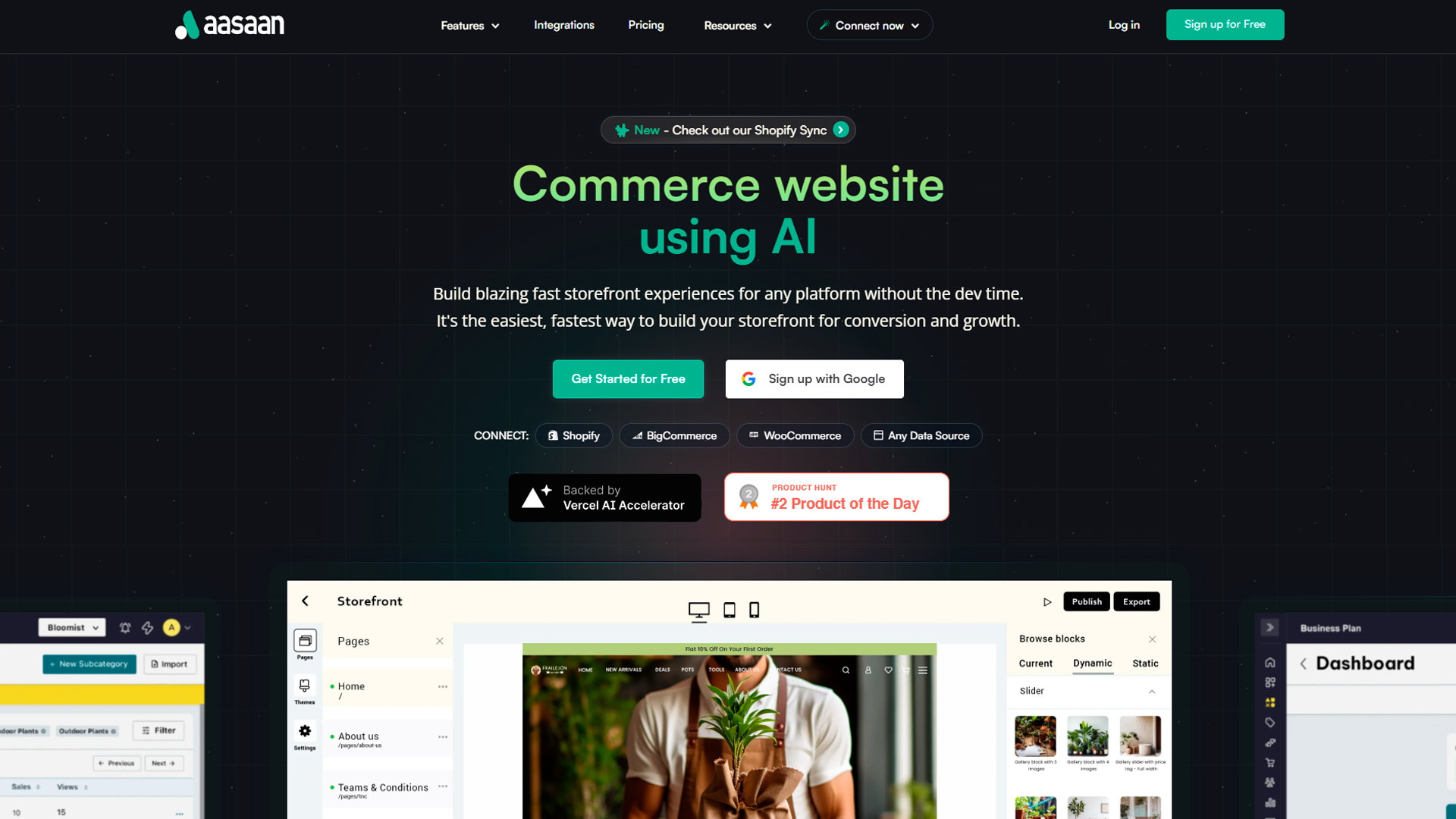
At Aasaan, we are proud to offer our customers a cutting-edge headless storefront builder that allows them to create next-generation shopping experiences without the need for coding.
Our template-driven front-end and API-first commerce platform enable you to visually build high-converting storefronts and mobile apps in just a matter of minutes.
With Aasaan, you can connect seamlessly with your existing backend or start from scratch with our API-first commerce platform.
This means that you can harness the power of best-in-class technology within seconds and build rich, dynamic shopping experiences using your own data, like product catalogs.
Our drag-and-drop interface empowers you to control the customer journey and manage shopping experiences without reliance on developers.
This freedom of choice ensures that you can create bespoke experiences from scratch, utilizing our building blocks.
Once your storefront is built, you can connect your custom domain and deploy lightning-fast, reliable storefronts with our cutting-edge serverless deployment architecture.
Our platform provides 99.5% uptime, allowing you to measure and analyze engagement to guide your content, digital strategies, and sales.
With Aasaan, you can manage all aspects of your business from a single admin app. From inventory to order management to website customization and store marketing, Aasaan makes it easy to streamline your operations and stay on top of your business.
In addition to our headless AI store builder, we offer seamless integrations to expand the capabilities of your storefront with tools you love to enhance your customers’ shopping experience and boost your business growth. Plus, you can leverage our API to write your own integrations.
If you’re ready to unlock a new era of commerce and create the best online shopping experience, give Aasaan a try for free today. Our platform is designed to help you build, sell, market, and manage your online business in the easiest way possible.
2. Shopify Plus
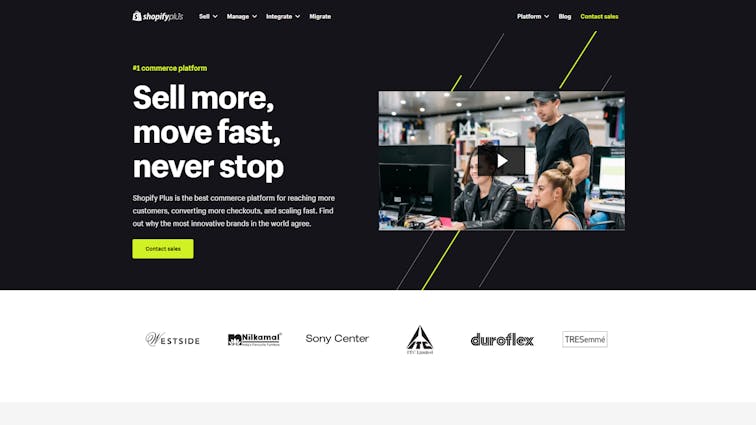
Shopify Plus is a cloud-based SaaS platform that provides an all-in-one solution for businesses of all sizes. Its user-friendly interface allows merchants to easily customize their storefronts and manage their products, orders, and customer data.
Shopify Plus also provides advanced features such as custom checkout, multi-channel selling, internationalization, and 24/7 support.
Shopify Plus pricing starts at $2,000 per month for the basic plan.The exact pricing depends on the merchant’s revenue level and specific needs.
Shopify Plus integrates with over 2,500 apps in its app store. It also offers APIs for custom integrations.
Some of its top features include multi-store management, wholesale selling, fraud analysis tools, inventory management systems integrations such as DEAR Inventory Management software or TradeGecko inventory software.
3. BigCommerce Enterprise
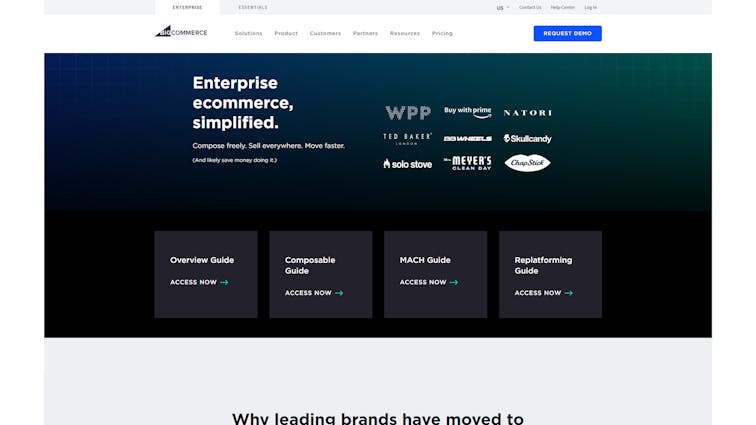
BigCommerce Enterprise is a cloud-based SaaS platform that provides an all-in-one solution for businesses of all sizes.
Its user-friendly interface allows merchants to easily customize their storefronts and manage their products, orders, and customer data.
BigCommerce Enterprise also provides advanced features such as multi-channel selling with Amazon integration capabilities or custom checkout pages that can be tailored to your brand’s unique needs
Pricing starts at $1,000 per month for the basic plan for mid-sized businesses with up to $5 million in online sales annually while enterprise-level pricing is available upon request which can be more suited to larger companies looking to scale up.
BigCommerce Enterprise has a large app store with over 500 apps available.It also offers APIs for custom integrations.
Some of its top features include multi-store management, wholesale selling, fraud analysis tools, inventory management systems integrations such as ShipStation or SkuVault.
4. Adobe Commerce (Magento Commerce)
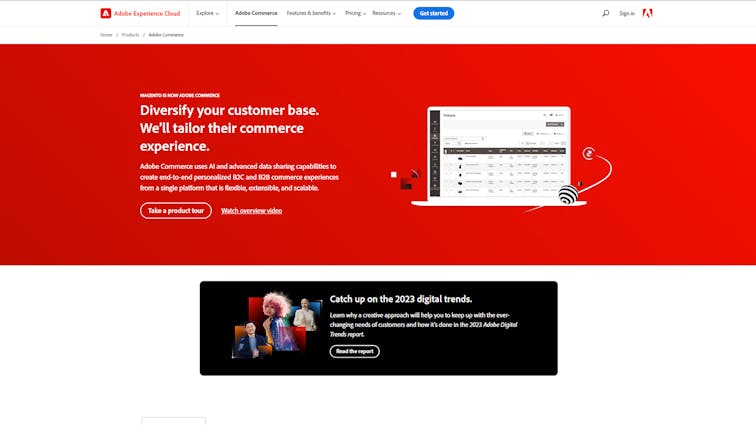
Magento Commerce Cloud is an open-source platform built for businesses of all sizes. It offers a customizable and flexible solution that can be tailored to fit any business needs.
With powerful marketing tools including email campaigns, targeted promotions, and abandoned cart reminders, merchants can create a personalized shopping experience for their customers.
Pricing starts at $1,600 per month for mid-sized businesses with up to $3 million in annual online sales while enterprise-level pricing is available upon request which can be more suited to larger companies looking to scale up.
Adobe Magento Commerce Cloud has a large community of developers who have created over 5,000 extensions on the marketplace.It also offers APIs for custom integrations.
Some of its top features include multiple storefronts management, advanced product options customization capabilities such as bundle products or options templates creation as well as integration with popular CRMs like Salesforce or Hubspot.
5. Elastic Path Commerce Cloud
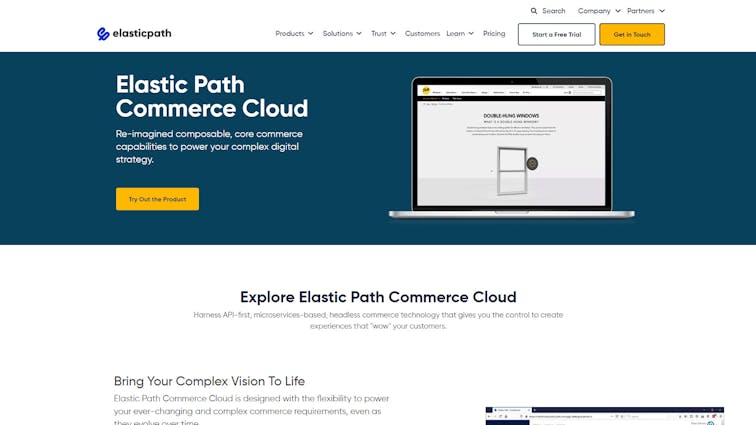
Elastic Path Commerce Cloud is an API-first commerce platform that enables businesses to create custom commerce experiences across multiple channels including mobile devices or IoT devices through headless architecture approach.
It provides merchants with the flexibility they need to grow their business in today’s fast-paced digital environment. Pricing is available upon request which will depend on the company’s specific needs.
Elastic Path Commerce Cloud offers a wide range of integrations with major business systems such as content management systems like WordPress or Drupal, ERP systems like NetSuite or Oracle, and many more.
Some of its top features include microservices-based architecture approach, custom pricing models creation at the customer level, user-friendly Admin Panel for ease of use and integrated analytics to track store performance.
6. Salesforce Commerce Cloud (formerly Demandware)
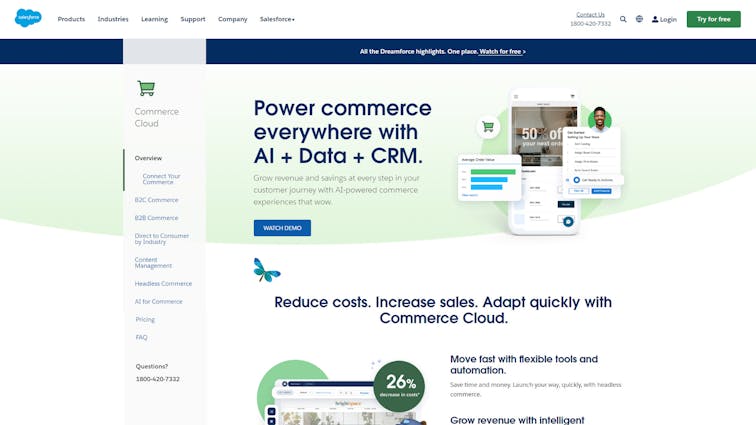
Salesforce Commerce Cloud is a cloud-based commerce platform that provides businesses with tools to create personalized experiences for their customers across multiple channels such as web, mobile devices or social media.
With features like one-to-one personalization, unified commerce platform which connects online and offline sales data & more; Salesforce Commerce Cloud offers merchants a sophisticated solution for managing their e-commerce operations.
Pricing starts at $2,000 per month while enterprise-level pricing is available upon request which can be more suited to larger companies looking to scale up.
Salesforce Commerce Cloud is known for its ability to integrate with the entire Salesforce ecosystem including Marketing Automation software Pardot or Sales CRM platform; it also has over 2,500 pre-built integrations available in the AppExchange store.
Some of its top features include product recommendations based on customer behavior analysis or AI-powered search functionalities that improve conversion rates by showing relevant products first.
7. Swell
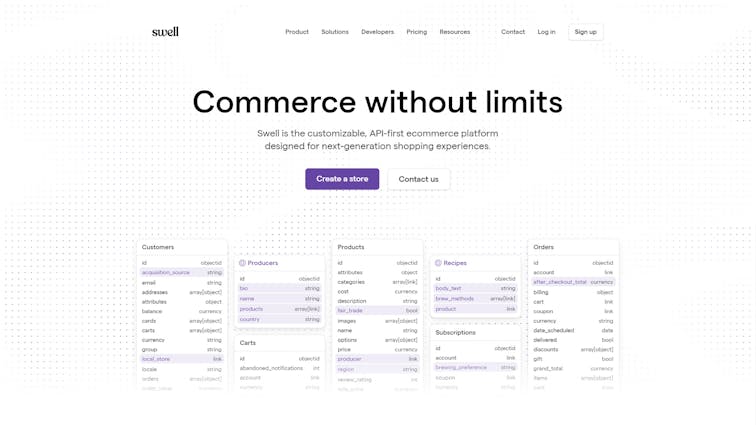
Swell is a headless e-commerce platform designed for startups and fast-growing businesses. Built on GraphQL API, it enables developers to create custom, scalable online storefronts across multiple platforms and devices.
Swell is easy to use and provides features such as subscription management, discounts, and sales. Its headless architecture permits businesses to easily adapt and add new channels, customize the user experience, and upgrade their commerce operations.
Swell offers a free development plan with basic features. Once you’re ready to launch, pricing starts at $400 per month for the Plus plan, which includes additional features like reporting and analytics tools. For larger businesses or custom requirements, there’s an Advanced plan with pricing available upon request.
Swell platform offers built-in integrations with popular tools like Stripe, Braintree, and ShipEngine, along with extending functionality through custom integration options.
Some noteworthy features include headless checkout powered by GraphQL, taxation and shipping customization, multi-currency support, and the ability to onboard resellers or affiliates.
8. Snipcart
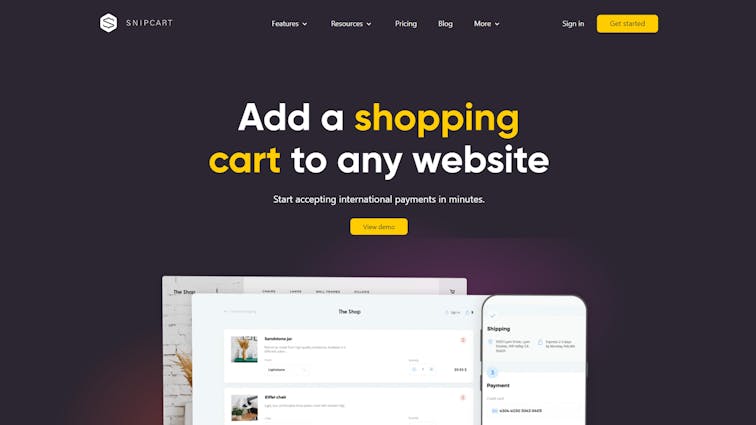
Snipcart is a developer-friendly, headless e-commerce solution that allows you to add a customizable shopping cart to any website with just a few lines of code.
It provides merchants with a highly flexible and easy-to-use tool suitable for small to medium-sized businesses looking to add e-commerce functionality to their existing websites or to create a new, custom online store.
Snipcart offers a free 14-day trial, after which the Standard plan starts at $25 per month + 2% transaction fees, which suits the requirements of smaller scale businesses. A custom pricing plan is also available featuring reduced transaction fees, a dedicated account manager, and more.
Snipcart seamlessly integrates with popular content management systems like WordPress, Joomla, and Drupal, as well as static site generators like Jekyll or Hugo.
It also offers integration with most payment gateways like Stripe or PayPal, and shipping carriers such as UPS, USPS, or Canada Post.
Some of its top features include instant cart deployment using just HTML and JavaScript, promotion and discount codes management, subscriptions, and recurring billing support, and real-time shipping rates and taxes calculation.
9. Commerce tools Platform API-First Approach to E-commerce
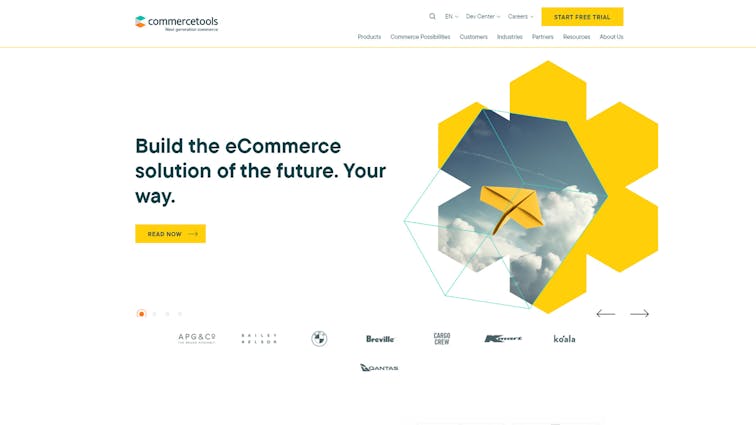
Commercetools Platform is an API-first commerce platform that provides merchants with a flexible solution for their needs.
Its headless architecture approach allows businesses to easily build custom frontends using popular frontend frameworks like React or Angular while providing features such as customer data management, order management, and catalog management tools.
Pricing is available upon request which will depend on the company’s specific needs.
Integrations and features: Commercetools Platform integrates with a wide range of systems including ERP and CRM systems, payment gateways, shipping providers such as UPS or FedEx.
Its top features include multi-store management, customizable checkout flows creation at the customer level, customer grouping & segmented pricing as well as integrated analytics to track store performance.
10. Spryker Commerce Cloud
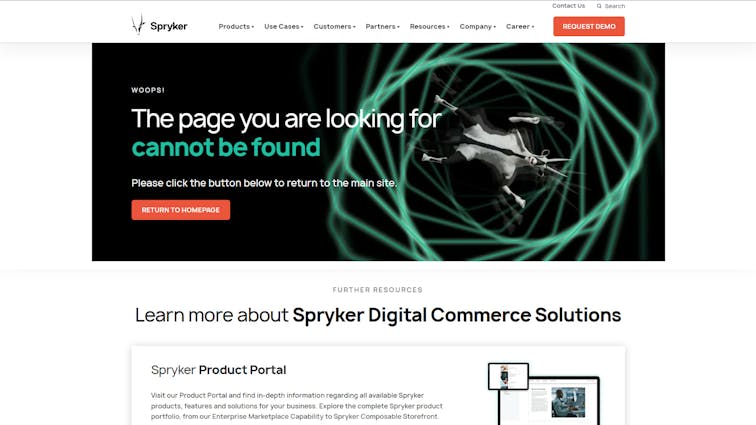
Spryker Commerce Cloud is a highly flexible and scalable cloud platform that offers merchants a modular and API-based architecture to build custom applications with ease.
Its headless approach allows businesses to create unique frontends with popular frontend frameworks like React or Angular. Spryker Commerce Cloud is designed for medium to enterprise-scale businesses looking for a feature-rich and scalable e-commerce platform.
Spryker Commerce Cloud offers custom pricing based on the specific requirements and size of the business. Exact pricing is available upon request.
Spryker Commerce Cloud provides seamless integrations with numerous systems such as ERP and CRM systems, payment gateways like Stripe and PayPal, and shipping providers like UPS or FedEx.
Its top features include multi-store management, customizable checkout flow creation at the customer level, customer segmentation and targeted pricing, product management, and integrated analytics for tracking store performance.
Moreover, it supports an extensive marketplace of modules and plugins for various functionalities such as marketing, sales, or customer service. Its active developer community continuously works on creating new integrations and extends platform capabilities.
Get Started On Your Headless Commerce solutions Journey With Aasaan
Introducing Aasaan Headless Commerce - the simplified solution for businesses who want to enter the world of headless commerce without the hassle of high costs and developer dependencies.
Our frontend as a service platform seamlessly integrates with any eCommerce platform, providing a powerful backend solution to manage your inventory, orders, and payments.
In addition, our user-friendly, no-code headless storefront builder allows you to launch a high-converting storefront on any device. With Aasaan Headless Commerce, you can experience the benefits of headless commerce without the complexities.
Conclusion:
After looking at the best headless commerce companies in the market, it is clear that each one has its strengths based on what you are looking for in an e-commerce platform.
Whether you need a platform that offers advanced customization options or easy integration with third-party apps such as inventory management software; there is a wide range of solutions available which can help you achieve success in your online business venture.
Ultimately, it’s important to identify your specific needs before making a decision so that you can choose the right platform for your business model.
FAQ’s On Headless commerce platforms:
1. Is headless CMS good for eCommerce?
Yes, a headless CMS can be a good choice for eCommerce. In fact, many eCommerce businesses are now adopting headless CMS solutions to manage their online stores. A headless CMS allows for greater flexibility and scalability compared to traditional monolithic eCommerce platforms.
2. What are the Benefits of a Headless eCommerce Platform?
Some benefits of a headless eCommerce platform include:
- Greater flexibility: With a headless architecture, businesses can build and customize their front-end user experiences without any limitations set by the out-of-the-box” back-end systems.
- Scalability: Headless eCommerce platforms can handle spikes in traffic, making them perfect for seasonal eCommerce operations or promotions that bring in a large number of users.
- Faster time to market: As developers can work independently on front-end and back-end systems, this allows for quick updates in functionality, leading to a faster time to launch new features and improvements.
- Seamless third-party integrations: API-first architecture facilitates better interoperability with third-party apps and services, which results in seamless integrations and improved workflows.
- Improved user experiences: Developers can utilize modern front-end frameworks and technologies to create unique and engaging UI/UX designs, enhancing the overall customer experience and possibly leading to higher conversion rates.
3. Are headless eCommerce platforms more expensive than traditional ones?
The cost of a headless eCommerce platform can significantly vary based on the specific features and support required. Some headless platforms may offer lower starting prices while others cater to enterprise-level businesses with custom pricing. However, choosing a headless eCommerce platform can lead to long-term savings due to increased efficiency, flexibility, and scalability, resulting in a lower total cost of ownership compared to traditional platforms.
4. What is headless eCommerce vs monolithic?
Headless eCommerce separates the front-end presentation layer from the back-end logic, allowing for more flexibility and customization. Monolithic eCommerce, on the other hand, has both layers tightly coupled, limiting customization but offering simplicity and ease of use.
5. What is the difference between headless and Microservices?
Headless architecture and microservices both aim for flexibility and scalability. However, headless focuses on decoupling front-end and back-end, while microservices break down the back-end into smaller, independent services, each performing a specific function.
6. Can I manage multiple stores using a headless eCommerce platform?
Yes, many top headless eCommerce platforms feature multi-store management capabilities, allowing you to easily manage, organize, and run multiple online stores from a central location. This can be advantageous if you operate within different regions, target various audiences, or offer multiple brands/products and are looking for a unified platform to streamline your E-commerce operations.
7. Who uses headless commerce solutions?
Headless commerce solutions are primarily used by:
- Large Retailers and Brands: For high customization and unique online experiences.
- Startups and Innovative Businesses: For flexibility and quick adaptation to market changes.
- Omnichannel Retailers: To provide a seamless shopping experience across various platforms.
- B2B Companies: For tailored experiences and integration of complex business models.
- Content-Driven Sites: To integrate commerce seamlessly with content.
- Global Businesses: To adapt easily to regional market variations.
- Tech-Savvy Marketers: To implement advanced digital marketing strategies and technologies.
- Companies Seeking Customizations: For unique customer experiences beyond traditional eCommerce capabilities.








